There's no lack of choice when it comes to camera bags anymore, with new arrivals happening almost every month. So. it takes more than a polished marketing campaign to catch a useful level of attention, and this newcomer is more than that.
The entry point for designing and manufacturing a camera bag is relatively low, so it's a popular product to produce. The issue is, most people who design and manufacture a bag don't know enough about camera bags or manufacturing to really succeed, but they have a go anyway. The entry point is so low, in fact, that a few years back, when I couldn't find a street style camera bag I liked, I designed one and had a small batch made. The bar I set for my bag was low: I wanted something I liked the aesthetic of, but could also safely hold my camera and lenses when I was out in the city; that's not too difficult to achieve. New camera bags fall away quickly, however, when you raise that bar to be more all-encompassing. Xcube's bar is very high indeed.
In the last decade or so, brands like Peak Design have changed the standard we have come to expect. Their Kickstarter to fund their first bag was successful (I was one of the backers) and they've gone on to create fantastic, albeit reasonably expensive bags. What they inadvertently did with their success was make it much more difficult for new brands. Camera bags now have to do everything and do it well. When I see new camera bags being released, most just don't raise the bar enough for me to consider, but when Xcube Design got in contact with us, it pricked my ears up.
This is a sponsored post, which rightfully puts everyone on red alert for overly positive angles on brands. By all means, take what I say with a pinch of salt, but what I will say is that every week I opt not to write about myriad products, digital and physical, because I don't believe in them. Until I have completed a full, hands-on review of the Xcube, I could still be off-base with my praise — such is the nature of the crowdfunding era — but I truly believe that to be unlikely.

There's a lot to cover with the Xcube and I recommend browsing their Kickstarter to get a more comprehensive understanding. However, the takeaway points for me are that it is a minimalist, modular bag, with a plethora of extra features like anti-theft and hidden pockets, while achieving two primary goals: extreme durability and capacity.
Durability
The hard outer shell means that the Xcube will not get crushed, compressed, or misshapen under any normal or even fairly abnormal circumstances. While this has many practical uses — ranging from the obvious like protecting your camera gear, through to using the bag as a platform — it also overcomes the problem of bags losing their shape, which is one of my chief pet peeves. The shell is also shockproof up to two meters, meaning if your bag fell off a wall or rock, it could fall up to two meters without affecting the contents. This is the sort of perk you wouldn't think about until it did its job, then you're high-fiving strangers on the bus in gratitude.

The next wing to the durability benefits of the Xcube is it is 100% waterproof, which is worth unpacking. Many bags will say waterproof, or worse, water-resistant, but when you get clapped by a rogue wave or disappear into six feet of snow, you learn why these bag manufacturers aren't confident enough to use "100%" in front of the term. The casing and zippers are designs so that no water can penetrate and start bathing your bodies, lenses, and batteries. Incidentally, this also means you can wash the bag down if it gets dirty.
Capacity
The capacity of a bag is tricky; too small and it limits the use and application of the bag, too big and it feels like someone duct-taped a Samsonite to your back. What's worse is that for most of us photographers, what we take out on shoots varies hugely from day to day. Some occasions, I just want to pack light and not rue the weight as I wander around the wilderness. Other times, however, I need to cover a lot of bases for a client and have to take the bulk of my kit. This implies the need for two camera bags at the least, but it's not always necessary. The Xcube has some elegant solutions to this problem.

Firstly, the capacity of the bag is expandable by up to 30% with the outer surface being able to be extended outward. This is a feature I haven't often seen, and it can be tremendously useful. Secondly, there are 15 compartments, many of which are fully customizable, and space for a 16" or 17" laptop. These two, combined with the 180° opening (the value of which cannot be overstated) means you're left with a lot of space, but enough control that you can choose to use much smaller amounts of it if you wish without everything moving around of its own accord. This is without considering the add-ons of the Cube Pack, Sling Bag, and Magic Cube, which integrate with the Xcube, but can separate.
Noteworthy Extras
As I mentioned earlier in this article: there is a lot to discuss with the Xcube, so much so, I can't reasonably fit it into one piece and instead, I'll save it for a comprehensive review. However, there are some noteworthy quirks and extra features I'd like to point out:
- The Xcube comes with an anti-theft chain, similar to what you'd see on a bike, so you can fasten it to a railing or secure fixture. This chain has an official TSA lock on the end of it.
- It has a built-in elasticated keychain.
- The flat shell can act as a small desk or makeshift tripod.
- The shell is anti-scratch.
- Xcube comes in 34L or 43L, then there is the Cube Pack, Magic Cube, and Sling Bag as extras.
- It's an attractive, subtle design.
- It's a cheaper price than its direct competitors.
Conclusion
I usually steer clear of discussing Kickstarters or camera bags, opting to say nothing rather than praise something I don't have high hopes for. But with the Xcube, it really covers almost every base I could possibly need in a current camera bag, from utility through to aesthetic.
The Kickstarter campaign is still live and can be viewed and backed if you are interested, just click here.


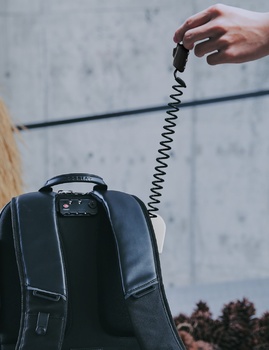
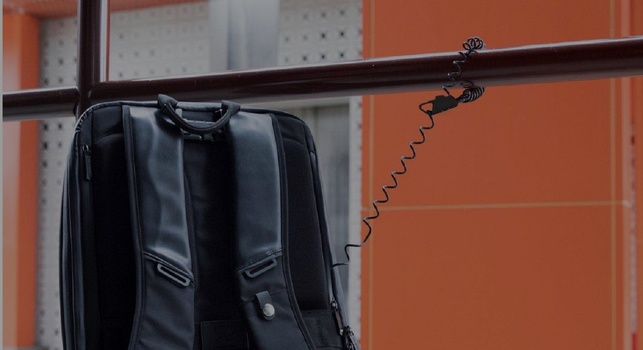
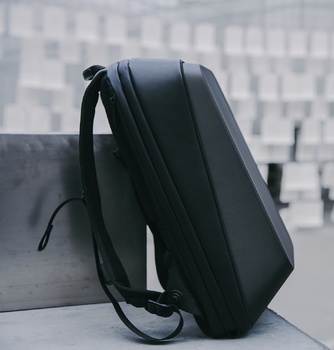
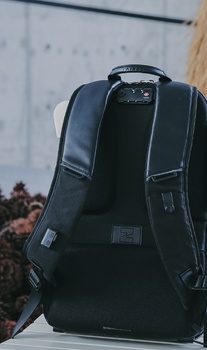





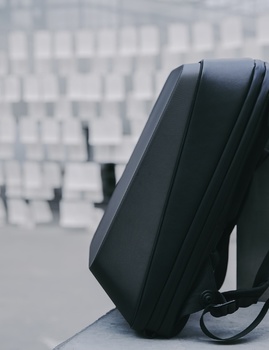






That cover picture is pretty bad, as is not appealing. Hoping this is not a new trend. The three pictures showing the inside are as awful. I'll skip the reading too.
Someone hasn't had their coffee today haha
Well can you see anything in that photograph? I can’t
I think it's odd Benoit Pigeon says I'll skip the reading too...
Yep, a few of the photos didn't convince me so why read the article. So yes no purchase from me. That's a photo web site, doesn't mean that I'll look at the article in the intended way. You can.
Possibly too many. Can you see anything beside the single(!) highlight on the left? That blur to fake a wall is weird too like a PS gaussian blur. I see other things on other images but won't comment.
I mean you do art that's okay with me, I won't say anything, you try to sell me a product... No way.
You must be fun at parties...
I guess, but are you?
Yes, it is very bad. But really bad is, the backpack looks ridiculous and ugly (to me).
The images are so dark you have to squint to see anything. No shadow details at all. Emotive if this is a new trend perhaps reflecting the “dark times” we’re in? Awful product photography nevertheless
The article isn't about product photography... I don't think you should judge everything based off of the product photography.
It’s about a product and if I can’t see the details it also reflect badly on the product.
And since this is a photography forum people will professionally point to some of the issues like bad product photographs.
What awful product photography. Too moody to make me want to read further.
While a number of people in the comments have noted the difficulty to see the inside of the bag as a flaw in the product photography, the situation is actually worse than that. That all black interior is a flaw in the product itself - though not one unique to this bag.
A lot of my camera gear is black or darkly colored - including small items. If this darkly colored gear goes into this darkly colored bag interior, I'm dubious about being able to find things easily. Particularly after the sun goes down or in a dimly lit hotel room.
Another review that doesn't show any gear in the bag. Listen I get that the exterior of the bag is what the design is about, but an empty bag with dividers doesn't really show me anything. Does it hold a gripped DSLR with a 70-200 or is it for a small mirrorless system? Does it hold anything other than camera gear? Clothes, papers, jacket, etc? I understand that most of these bags are all about the "aesthetic", but really the reason that G.A.S. happens with camera bags is because of posts like this. "That bag looks cool" -- photog buys it and then none of your stuff fits right.
I do the product shots in trade for two backpacks and the extras .
My concern: I hope I'm not correct, but it doesn't look like the bag conforms to the back of the user in the least - no padding, no shape, no venting mesh (ie, like Osprey backpacks), etc. After 5 minutes carrying it fully loaded, it looks like it could get *very* uncomfortable.
Designed for aspiring ninja turtles
I carefully examined all the photos, and besides the dark, artsy photos alluded to by others, I didn't see a waist belt. If you have a fully loaded back pack with camera(s), lenses and a laptop as illustrated, you can lay bets it will be heavy. This backpack fails.
I probably have 10 different backpacks for different applications, from a heavy duty LowePro AW that I load my 500mm f/4 with attached D850 plus accessories, to a slash-proof PacSafe Venturesafe Expedition 55 litre pack used for foreign travel loaded to 8 kilos, https://int.pacsafe.com/collections/backpacks/products/venturesafe-exp55... , to a Think Tank Urban Disguise for city and day use with a single cam and two lenses.
Good shoulder straps, and a waist belt are mandatory, if I will be carrying it for hours and don't want to suffer from sore shoulders and an equally sore back.
Oh, one final thing about backpacks that carry multiple lenses that really bugs me - if you have to open it during inclement weather, be it a rainstorm, sandstorm or snowy weather, guess what - all your gear is exposed to the elements. Be prepared to pack your lenses individually inside clear ziplock bags to protect them from the elements, or suffer the consequences.
My solution - I pack my valued lenses individually inside padded Lowe Pro lens cases, which then get placed inside a strong, durably shell pack like the PacSafe mentioned earlier. Works like a charm!
Cheers,
Frederic in Montréal
This is so obviously an biased advert disguised as an article. Which will put doubt on any genuine articles.
This 'perfect' backpack fails instantly because it has no waist-strap. You carry the weight of a well designed backpack on your hips, not your shoulders and spine.
Stop it, just stop it. Benoit gets time out for 5 minutes and the rest of you need to get a life....Grow up.
Haha, can't find a shortcut to the feed that links to this story the day this came out, but may be it's better for my eyes too!
1. The missing waist strap is a full-stop deal-breaker for me. That fail contradicts one of the author's main selling points that manufacturers too often don't really know camera bags. His unstrapped assertion is that this one does.
2. Why has the author not responded to any of these comments? I'm sincerely interested in hearing his rebuttals.
A mention of how much it weighs would be relevant and helpful. Also, am I the only one that wants a white, or light colored interior?